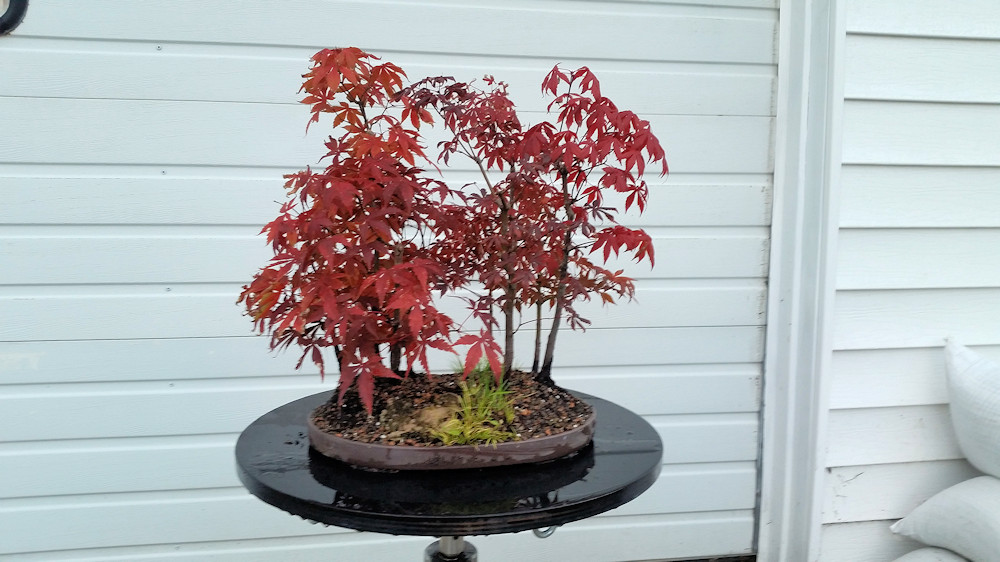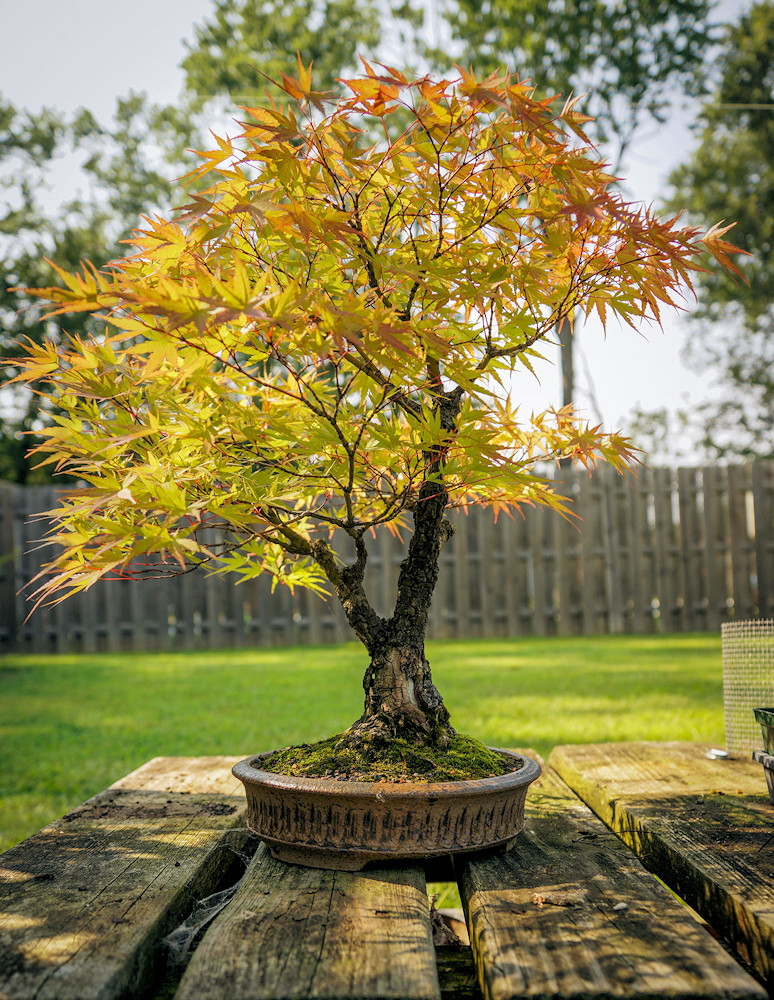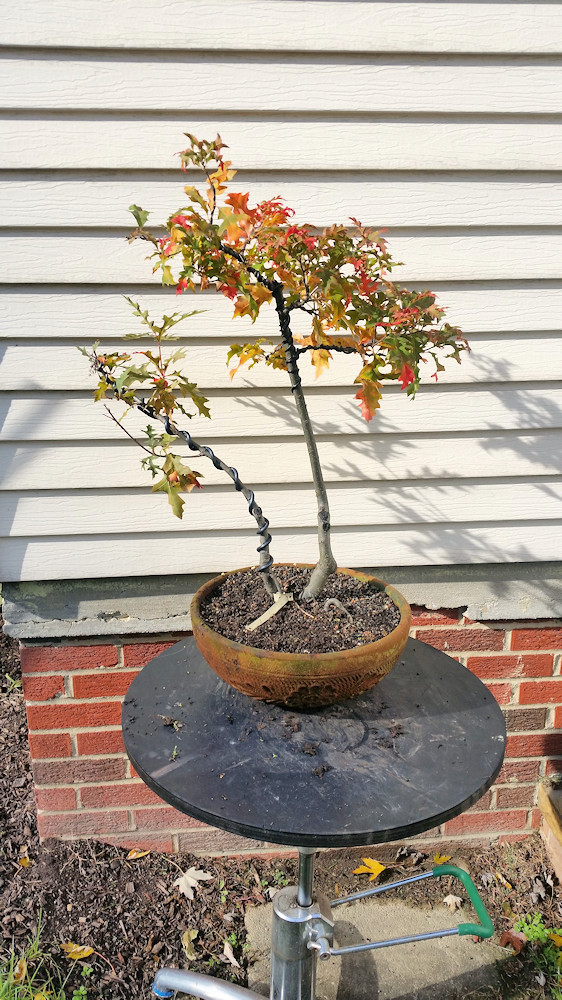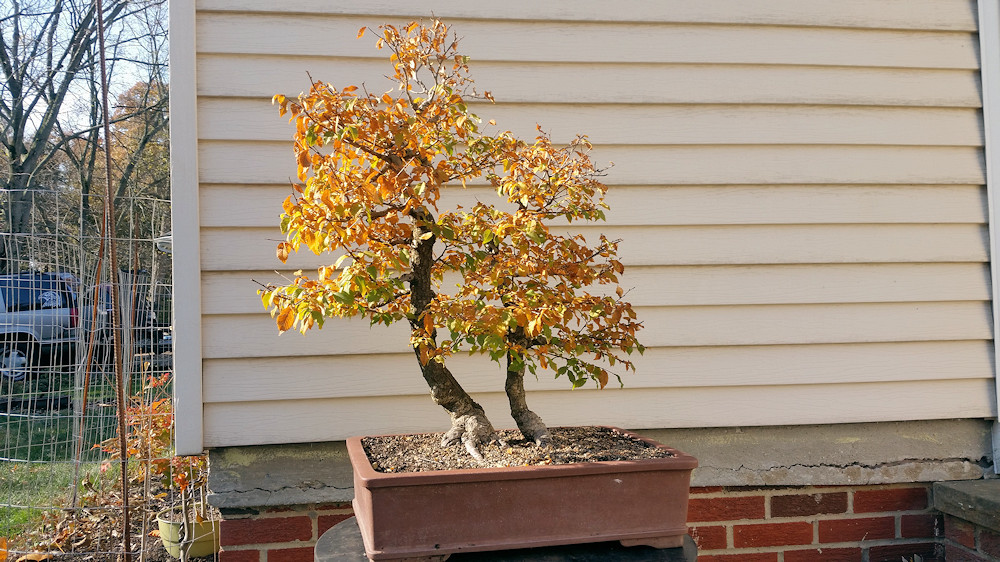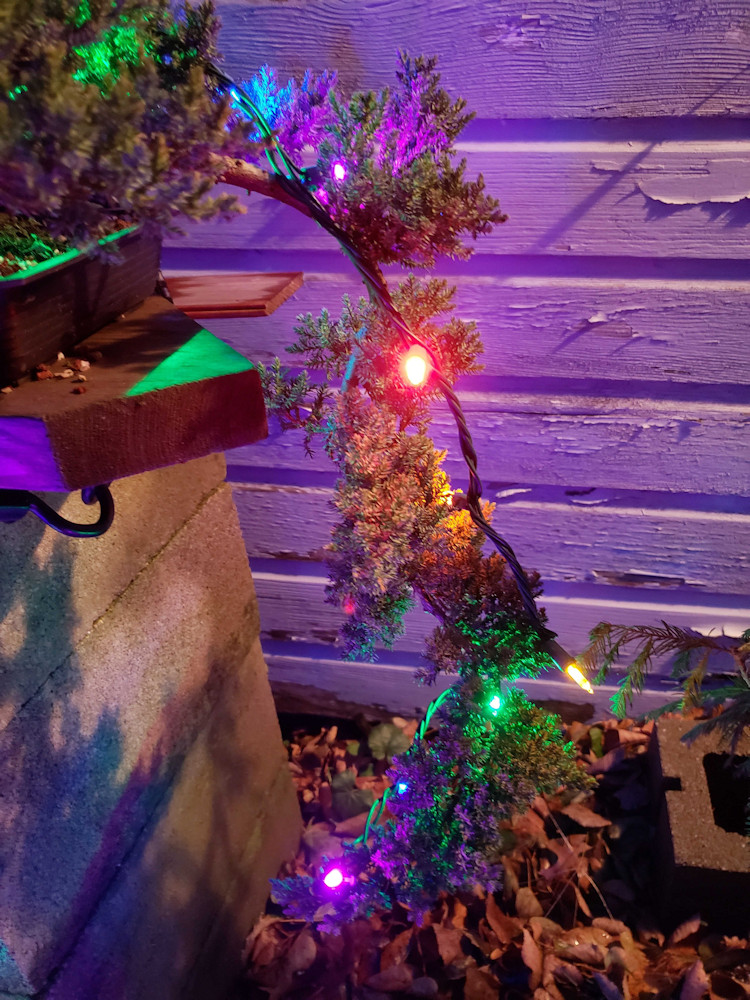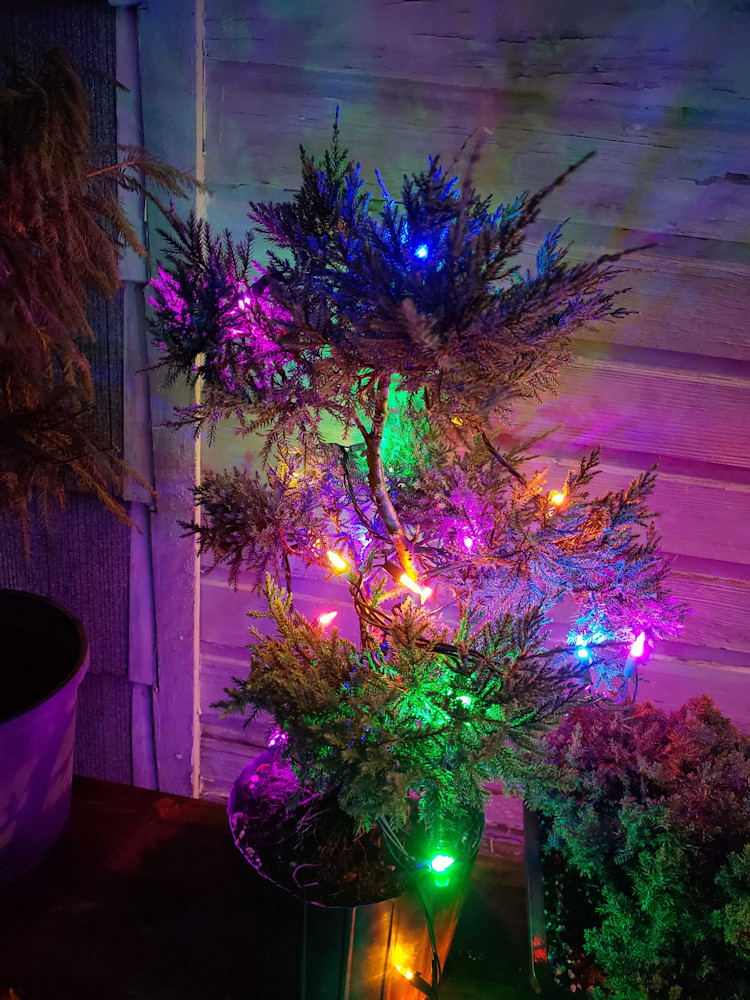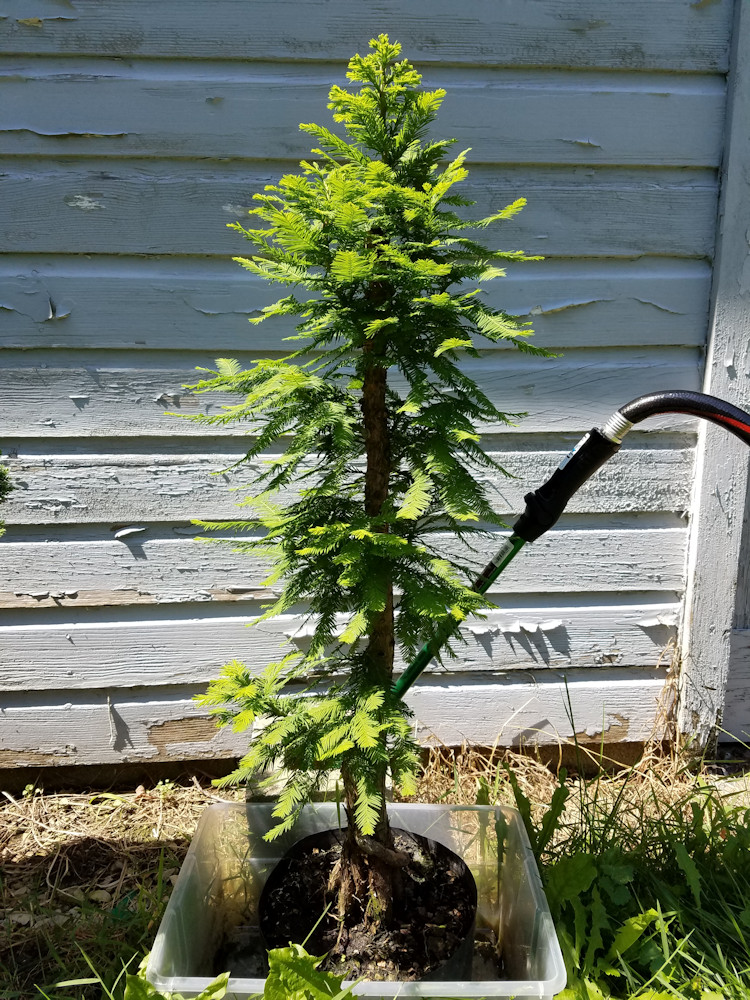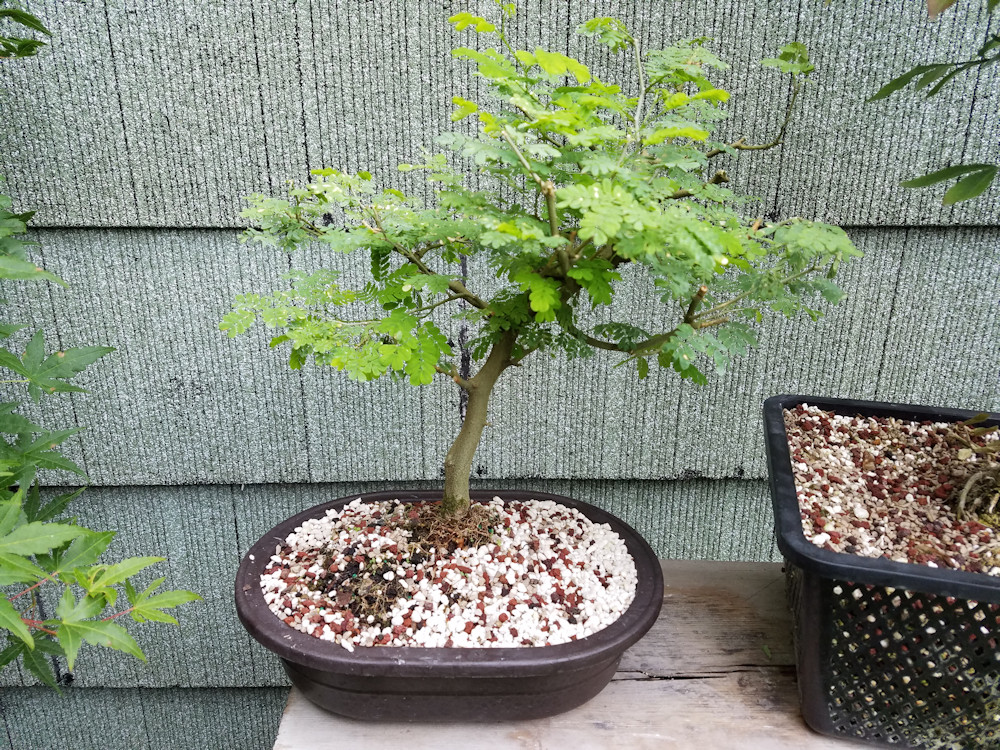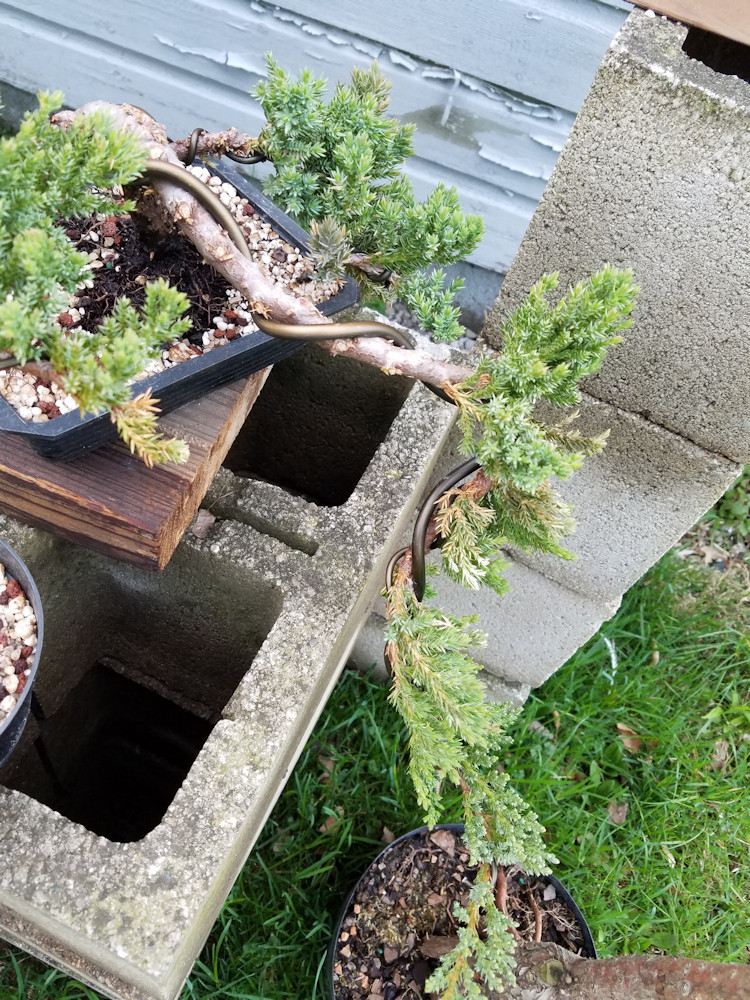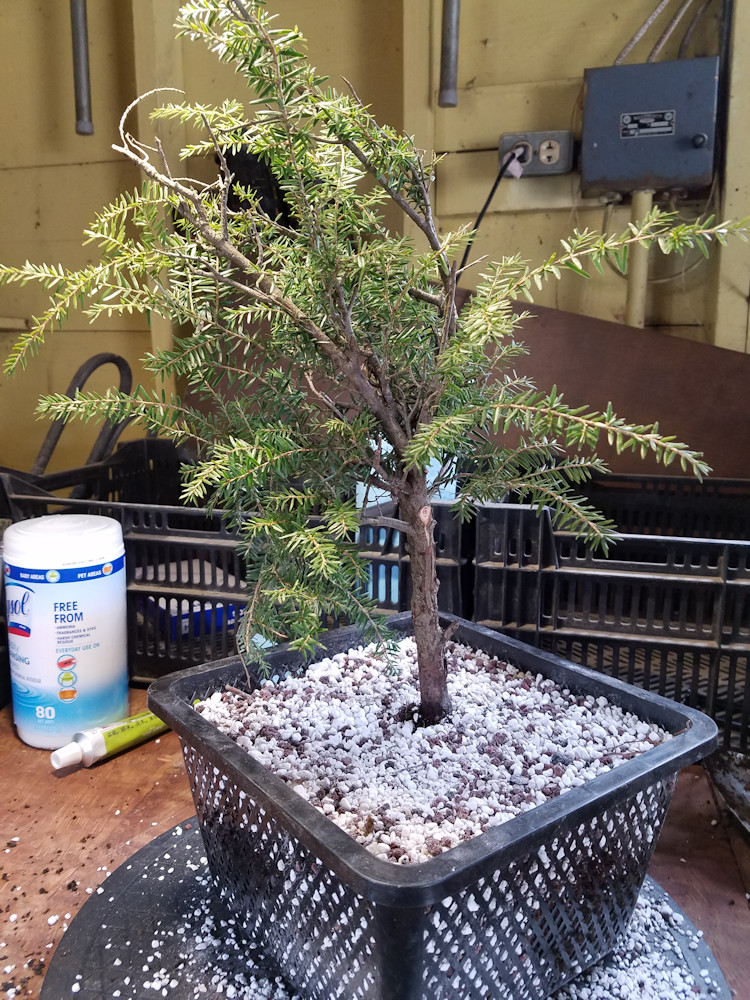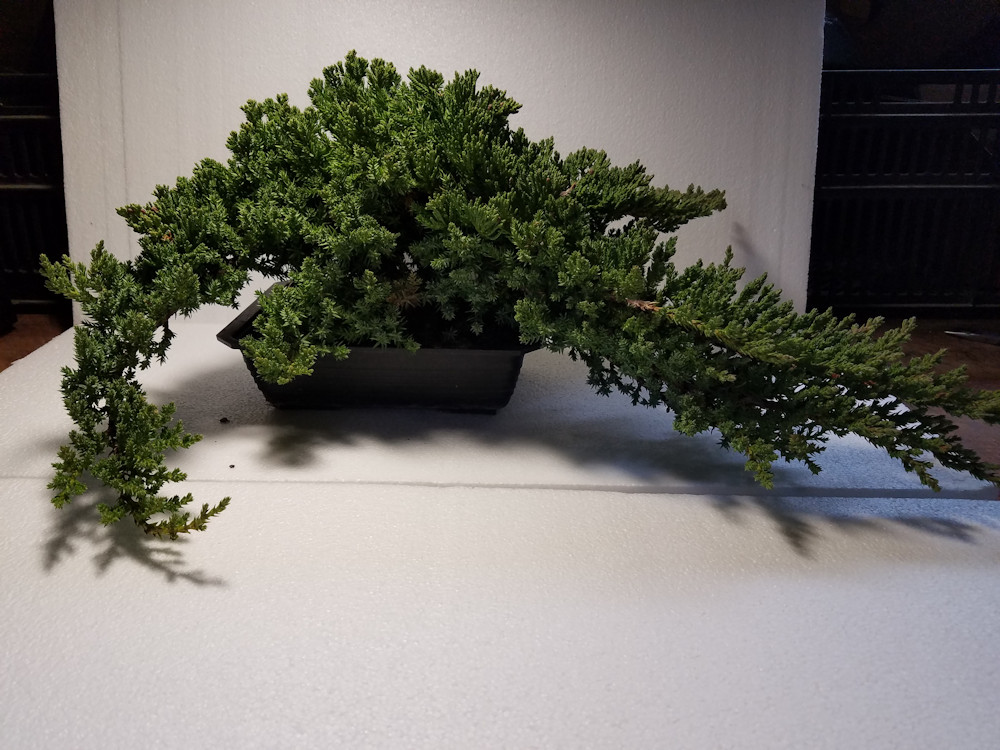Author: Daniel White
Story of a Tree
Bonsai trees come in many different sizes, styles and types but one thing that is common to a refined bonsai is the appearance of age. A bonsai should appear to be much older than it actually is (in general, some bonsai truly are hundreds of years old!).

It is often said that a bonsai is the artist’s interpretation or impression of a tree. While some bonsai are replicas of full grown trees in their glory that have been rendered in miniature, there are also many that are made to look like an ancient tree that was kept small by nature and the elements. Those natural trees are the true inspiration behind the bonsai art, originally found in harsh mountainous environments. Trees that are naturally stunted in this way can be worth tens of thousands of dollars and are known as yamadori.
To me, some of the best bonsai are recreations of these unique trees found in nature and should be able to tell a story of how they ended up in such a form (rather than simply be bent into a S shape like so many mass-produced “bonsai” you might find at a box store). I like to look at these twisted form and imagine how they might have ended up that way. When designing my own bonsai, I try to continue this element of realism into the composition. Let’s look at a few trees and guess their stories.

Take this tree, for example. It is easy to imagine that while it was still young another tree fell onto it, knocking it to the ground but not killing it. As the tree recovered, it grew around the fallen trunk and branches and back up towards the sky, ending up with the twisted base and trunk that you see pictured. Eventually, the dead tree that caused all of this rotted away leaving its tale of woe in the victim’s twisted form. The tree also had to fight soil erosion that exposed the roots and threatened desiccation in the harsh environment.

In this next example, perhaps this tree was nearly blown over. But I think it is more likely that it was growing on the side of a cliff, clutching the rock face for its very life and the elements and gravity pulled down against the upward growth. A rock outcropping above could have forced the strong lean as it reached out for light. In my own backyard I have a similar tree growing beside a creek. Early spring storms flood the creek and erode the bank as the tree slowly falls over the side, held in place only by strong support roots on the other side.

This poor, tortured soul looks as if it hasn’t had a pleasant day in its life. Try as it may to thrive, harsh desert winds beat upon it, blowing sand stripped the bark, falling rocks crushed and deformed, and animals grazed on its branches. You can see where the main trunk snapped, leaving a side branch to take over as the new trunk line. Another branch was not so lucky and remains as a lifeless, bleached appendage. Yet through it all a vein of live growth persevered and managed to survive. Eventually, enough growth was able to make it above animal grazing level to thrive, a head of healthy green to contrast with the gaunt skeleton below. A constant reminder of all that was endured.

Even this strong grower was no stranger to the elements. Fate deposited multiple seeds near to each other that took root and the brothers fought each other for decades while harsh storms bent and snapped branches. Eventually, a gale broke the larger of the two nearly in half but it wasn’t enough to kill it. Weakened, it still continued to grow and struggle against the world.
When you look at bonsai trees, whether your own trees or someone else’s, what stories do they tell?
Seasonal Color
We’re now into meteorological winter and a time of dormancy for most bonsai trees. However, the end of the season offers once last chance for enjoyment before the winter doldrums hit.
Browse through the gallery below to get a look at some seasonal color from a few of our members’ trees!
Best Practices for Bonsai Winter Care
One topic that comes up frequently, particularly as winter approaches, is how to safely overwinter bonsai trees. There is no one answer but there are several important guidelines to keep in mind.
First is the hardiness of the tree. The hardiness zone refers to the annual extreme minimum temperature of a region. It is used as an indicator of what plants can survive winters in that region. For example, northeast Ohio is zone 6a and generally doesn’t exceed -10°F. It is important to remember that this is for a plant growing in the ground. A plant in a pot does not have any insulation for its deeper growing roots so a good rule of thumb is that you lose a zone when the plant is in a pot unless additional measures are taken. Therefore a plant that is hardy to zone 6 is really only hardy to zone 7 when it is in a pot and unprotected.
When we talk about winter protection for a plant there are really two things we’re looking at: temperature and wind damage.
For plants that are hardy beyond your zone, (for example a zone 3 plant living in zone 6) you likely will not need any temperature protection. Even in those cases, though, it is advisable to give some protection to the roots to ensure the best chance of survival. So how do you do that?
One method is to simply put the plant into the ground. Dig a hole and either remote the plant from the pot or put it into the hole pot and all (assuming your pot is capable of withstanding the cold temperature). Some bonsai practitioners will remove their tree from its ceramic pot and put it into a plastic pot for overwintering in the ground. Then, cover the rootball as you would when planting a tree in your yard. Be careful to not plant it lower in the ground than the current surface level of the tree to reduce the chance of water damage. For easier removal in the spring, some choose to backfill the hole with woodchips, mulch, or sand.
Another similar method is to place the plant on the ground and “heel-in” with mulch piled up to the lip of the pot. Again, sand or woodchips works here. Some people use straw or hay but there is a danger of weed seeds getting into the bonsai soil if you do that. Hay and straw can also be attractive to mice which can then chew on the roots or trunks and kill the tree.
Speaking of mice, it is generally advisable to wait until everything is well frozen before putting away your trees for the winter. Some people in the USA use Thanksgiving as the target weekend. Doing so increases the chance that vermin will have already located their winter quarters rather than making a home in your trees. To further decrease the odds of rodent damage you can also spread around some mouse bait (taking care that your dog doesn’t get into it if you have one!).
Some people choose to use a structure such as a greenhouse, shed or unheated garage. That can work but there is a danger of temperature fluctuations. Generally, you want to buffer the plant against rapid changes in temperature. If you get a warm winter day or a stretch of warmish days in the early spring you don’t want your trees to warm up too much as they could come out of dormancy, lose their ability to handle extreme cold, and then die when it cools back down. If you have no other option you may end up doing the “two-step” in the spring and taking your plants outside during the day and bringing them back inside every night.
Wintering inside a heated structure can be deadly for plants that require dormancy. If a plant needs dormancy and doesn’t get it then it will usually weaken and die within three years. So, bringing them into your house, a heated garage, or a warm greenhouse will usually kill it. This does not apply if it is a tropical plant (which doesn’t require dormancy and will die if it gets too cold) or if you’re merely applying minimal heat to keep the temperature consistently around freezing.
The other factor to consider is wind. This is usually the most dangerous aspect of a bonsai tree’s winter survival.
As wind moves across a plant it causes moisture in the plant to evaporate. This is the primary reason why deciduous trees lose their leaves in winter. However, there can also be moisture loss through the bark and buds. Even trees with thick, waxy leaves or needles (which are designed to minimize moisture loss) will often benefit from wind protection.
As we noted earlier, trees growing in the ground year round have roots below the frost level in the soil so never freeze. If the tree loses moisture, the unfrozen roots are able to replace it. Bonsai trees, even if put into a hole in the ground, are not below the frost level so once the soil freezes the roots are not able to replace the lost moisture so the tree can desiccate and die.
There are many ways of offering wind protection. Most people place their trees up against a building. This is often on the north side of the building to lessen the chance of the sun warming the plant too much in the winter or early spring even though many prevalent winds come from the north. Keeping in mind that you need to balance temperature protection with wind protection it is often advisable to supplement being up against the building with leaning or erecting a cold-frame (clear plastic or glass), snow fence, or some other structure to further block or slow the wind.
Wind protection is one of the reasons people often want to use an unheated garage or shed but we already discussed those dangers. Underground structures, such as root cellars, can lessen the chance of temperature swings. However, if using such a structure be advised that evergreens continue to photosynthesize in the winter so will not do best in a completely dark location.
While temperature and wind are the two greatest dangers their are other things to keep in mind when overwintering bonsai trees. Take care to ensure they don’t dry out (you might need to water them on warm days). Beware of varmint damage from mice, voles, rabbits, and deer. If stored in a location with little air movement then mold could be an issue. You also need to keep in mind your particular microclimate as influenced by factors particular to your yard such as buildings, landscaping, etc.
While winter can be a dangerous time for bonsai trees, with a little preparation there is a good chance your trees will be fine!
2018 Fall Show
Take a quick walk around the 2018 Annual Show of the Cleveland Bonsai Club with member Dan White on a beautiful early fall day.
What is pre-bonsai?
At this year’s bonsai show the Cleveland Bonsai Club is going to have a table dedicated to pre-bonsai to show the various stages of bonsai creation. So what is pre-bonsai?
In its simplest form, bonsai translates to “planted in a tray” but you wouldn’t call an herb garden in a shallow pot a bonsai! A good working definition comes from Stephen Orr in The New York Times, “the term should be reserved for plants that are grown in shallow containers following the precise tenets of bonsai pruning and training, resulting in an artful miniature replica of a full-grown tree in nature.”
Of course, bonsai don’t just spring up as mature, dwarfed trees. It can take months, years, or even decades for a tree to reach the stage of refinement where it can truly be considered a bonsai.
There are basically three ways of reaching the final bonsai stage. The first is to grow a bonsai from a seed, cutting, or other propagation method. This is the slowest method and can take many decades to have a tree that resembles and ancient, wild tree. The second method is to collect a tree from the wild that already demonstrates many of the characteristics of a finished bonsai. Such trees may have been dwarfed by harsh climates, poor soil, or physical damage. Even these trees can often require many years to reach the refinement stage.
The most common method is to take a tree that has been growing in the landscape or nursery and cut it down into a smaller tree before beginning to refine the design. Some bonsai artists shop at the same garden centers as homeowners looking for bonsai candidates. Others shop at nurseries that specialize in producing plants intended to become a bonsai.
I’ve mentioned “refinement” several times, so what does that mean? It is extremely rare that even a “wild” bonsai (known as yamadori) are ready to be dug up and put into a bonsai pot as is. Most of them require additional work to shape into their final form, which is done by selective pruning and/or bending branches using wire. As they grow and make the transition into a final bonsai form they are referred to as being “in training” or in the “pre-bonsai” stage.
After months, years, or decades the tree will finally begin to resemble the final form the bonsai artist envisions. The tree trunk will have a decent thickness and has taken on an aged appearance. Strong branches will divide into secondary and tertiary branches. At this point the tree is ready for the design to be refined. Think of it as the finishing touches. Roots, trunk, branches and foliage are all the way the artist has envisioned and the tree is in a bonsai pot, tray, or other planting.
While a bonsai tree is never done growing, and thus never truly “finished,” it is only at this end stage that it can truly be referred to as a bonsai tree.
A few of the author’s pre-bonsai trees are shown here.
2018 Fall Show September 29/30
The Cleveland Bonsai Club is hosting our annual show the weekend of Saturday, September 29th and Sunday, September 30th at Rockefeller Park & Greenhouse.
Come and see more than 50 trees and learn about the art of bonsai! Trees will be on display at all stages of development. Vendors will have trees, pots, and other supplies for sale.
Demonstrations daily! Learn how these trees are selected, potted, wired, trimmed, and cared for from our club masters.
While you’re here, visit the beautiful greenhouses and gardens of Rockefeller Greenhouse.
The show is free and open to the public, though donations are accepted. Free parking!
What Happens at a Bonsai Club Meeting?
Are you interested in attending a meeting of the Cleveland Bonsai Club but aren’t sure what goes on? Well, it really depends on the meeting!
Some meetings will have a featured speaker on a particular topic. It could be about a style of tree, species, propagation technique, wiring, fertilizer, pretty much anything bonsai or bonsai related. One of the presentations this past winter was about Suiseki (stones).
Some meetings are basically mini-workshops. Attendees can bring any tree they want and work on it at the meeting while getting advice from other members. The pictures accompanying this article were taken at the June meeting. At this meeting, the new club website was unveiled and it was also a workshop. You can see some of the trees brought in to work on.
Anyone is welcome to attend any of the monthly member meetings so if you’re interested in learning more about bonsai feel free to stop in and introduce yourself! We are a good group of folks and welcoming to newcomers of any skill level. There is no cost to attend.
Bonsai Beginner
I’ve been interested in bonsai for over 25 years but only actually got involved less than a year ago. Like so many others it seemed daunting to me to get into the hobby. Sure, I bought the occasional bonsai tree at a department store or Amazon (derisively referred to as “mallsai” by many bonsai enthusiasts) but they all inevitably died. Now, ten months after taking my first beginner workshop, I have around 20 trees in various stages of development.
So, how do you get started if you’re interested in finding out if bonsai is the right hobby for you? There is no one right way but here are some things that helped me get started.
For me, the first step was the aforementioned beginner workshop. I had seen one several years ago at a local greenhouse but coudn’t attend so was waiting for the next one. The next one never came. Finally, I decided to take matters into my own hands and contacted the Cleveland Bonsai Club. One of their members, Dale Harder, responded and worked with me to put on a beginner workshop. I learned a lot and was immediately hooked. I had so much fun that I worked with Dale to host a second one the following year and I attended that one, too!
I acquired a few starter trees that first season but it was late in the year so there wasn’t much I could do before it was time to overwinter them. But, the winter did give me plenty of time to learn!
I bought several books off of Amazon (all out-of-print) and read them all cover to cover. Some were useful for the text, others were simply inspiring for the pictures. My selections were Sunset Bonsai Illustrated guide to an ancient art, BONSAI: The Art of Growing and Keeping Miniature Trees, Bonsai (A Care Manual), and The Living Art of Bonsai : Principles and Techniques of Cultivation and Propagation.
I watched a lot of videos on YouTube. As expected, some were better than others. My favorites were the ones put out by Ryan Neal of Bonsai Mirai. I really liked how he explained things and the level of detail he would give. I ended up learning so much from the free videos that I paid for a membership to be able to see more of them.
Earlier this year, I joined the Cleveland Bonsai club. The club is full of friendly, knowledgeable members and I’ve learned a lot from talking to them and watching them work. Some meetings have a theme and a presentation, some are field trips, and some are workshops. Each provides its own opportunity for expanding your skillset.
At the workshop I received a couple of beginner bonsai tools. Getting cheap tools is a good way to get started because you’re not out a lot of money if you decide it isn’t right for you. I was hooked immediately so I asked for and received a bunch of really nice mid-level tools for Christmas. I immediately noticed the difference in quality and I imagine the higher end tools are even better. But while they’re nice to have they aren’t really necessary. Many people get by with garden shears and pliers.
The last tip I’ll give was that I joined an online forum. There are many out there but I found my home at Bonsai Nut (look for Cable, that’s me!). While some of the members can be a little harsh to newbies that’s usually only when a beginner posts like a know-it-all. They even have a section of the forums dedicated to beginners (New to Bonsai) and I could ask the dumb beginner questions and get them patiently answered. You can post pictures to get help with identification, disease or pest issues, and get styling advice.
So, that’s how I got my start. If you’re a beginner like me hopefully some of that advice will help you get on your way. Most bonsai folks are passionate about the art and happy to get someone else hooked so don’t be afraid to ask questions!




